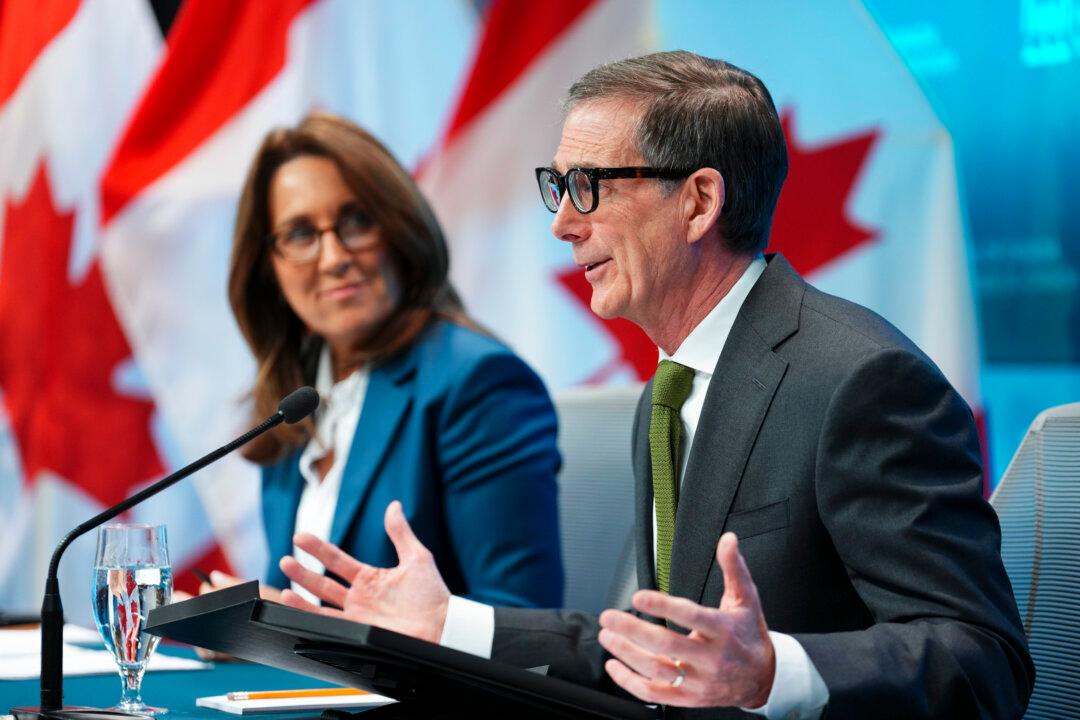OTTAWA—As widely expected, the Bank of Canada enacted its pause of interest rate hikes on March 8, but what may be the most compelling reason for the BoC to start raising rates again was not mentioned in its statement.
Economists and investors have long said that there are limits on how much monetary policy can diverge between Canada and the United States given how interconnected their economies are.
Canada’s central bank held its overnight rate target at 4.5 percent, saying that “global economic developments have evolved broadly in line with the outlook in the January Monetary Policy Report (MPR).”
But U.S. Federal Reserve Board chairman Jerome Powell’s hawkish comments on March 7 signalled that the Fed is nowhere near done raising rates.
Testifying before Congress, Powell said, “The latest economic data have come in stronger than expected, which suggests that the ultimate level of interest rates is likely to be higher than previously anticipated.”
Oxford Economics reported on March 7 that financial markets were now assigning a 50 percent chance of a half percentage point (50 basis points) Fed rate hike in March and a total of 100 basis points increase over the next four Fed meetings.
“We are keeping an eye on expected Fed hikes in the U.S. policy rate. Aggressive rate increases by the Fed might put pressure on BoC to also raise rates. But we expect the BoC will likely remain on hold unless the Fed funds rate moves to the 5.5 percent range—pushing the spread to 100bps—and forcing the BoC to hike rates to avoid a much weaker CAD [Canadian dollar] and higher import prices,” said Tony Stillo, director of economics at Oxford Economics, in a March 8 note.
‘Really Tricky Spot’
In an interview with BNN Bloomberg on March 7, former head of Canadian portfolio management at PIMCO Ed Devlin said the BoC is in a “really tricky spot.”
“If it [Fed] goes more than that [75 basis points], it’s going to be very difficult for the Bank of Canada to pause, if we continue to have inflation too,” he added.
The BoC did note that near-term outlooks for growth and inflation in the United States and Europe are “both somewhat higher than expected in January.”
The BoC also pointed out that the U.S. dollar has strengthened. Following the Powell comments, the Canadian dollar weakened to below US$0.73.
“There was no direct mention of the Canadian dollar, which on a trade-weighted basis is now at its lowest level since mid-2020,” said RBC senior economist Josh Nye in a note to clients about the BoC rate decision.
“As the market has reassessed terminal fed funds, it has also priced in significant odds of one more hike by the BoC later this year,” he added.





